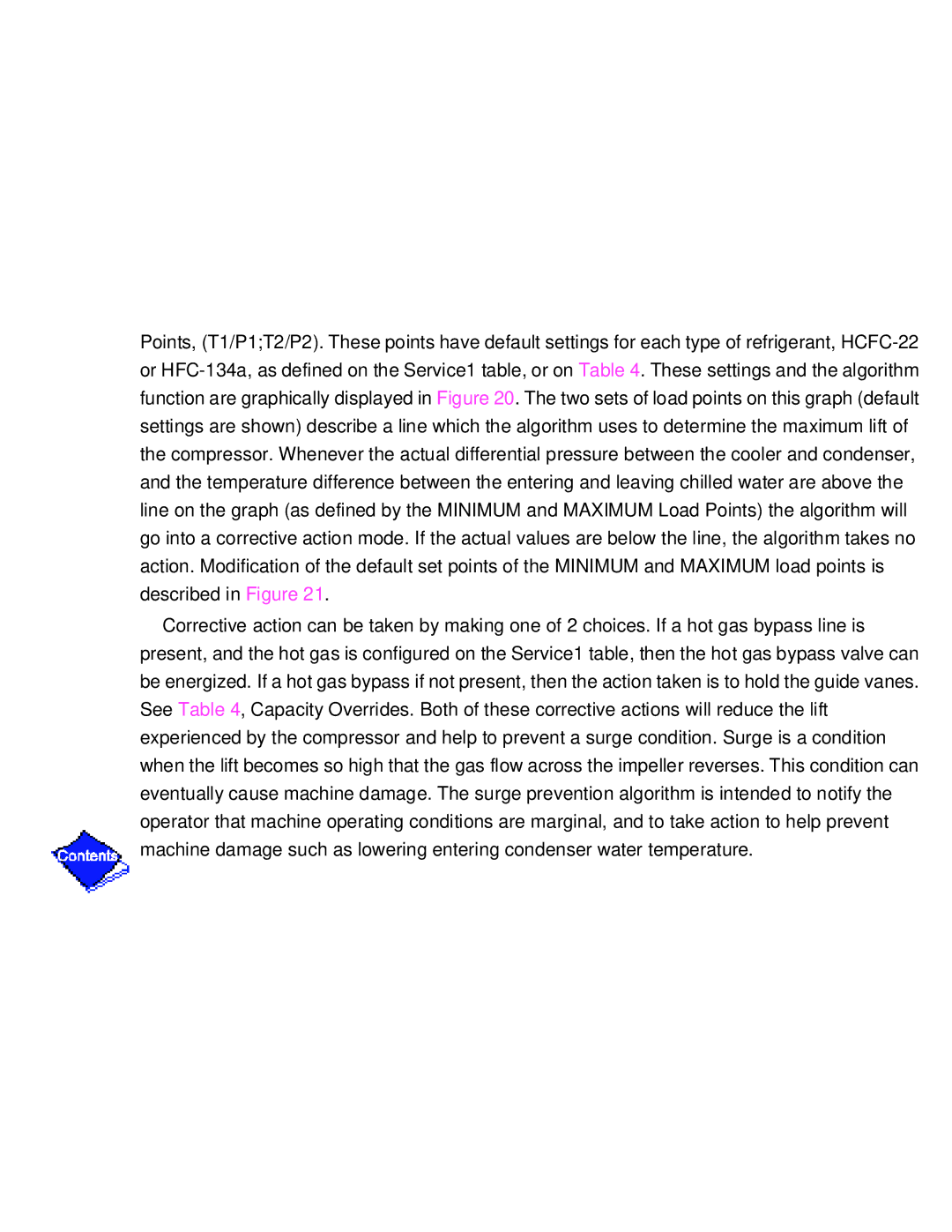
Points, (T1/P1;T2/P2). These points have default settings for each type of refrigerant,
Corrective action can be taken by making one of 2 choices. If a hot gas bypass line is present, and the hot gas is configured on the Service1 table, then the hot gas bypass valve can be energized. If a hot gas bypass if not present, then the action taken is to hold the guide vanes. See Table 4, Capacity Overrides. Both of these corrective actions will reduce the lift experienced by the compressor and help to prevent a surge condition. Surge is a condition when the lift becomes so high that the gas flow across the impeller reverses. This condition can eventually cause machine damage. The surge prevention algorithm is intended to notify the operator that machine operating conditions are marginal, and to take action to help prevent machine damage such as lowering entering condenser water temperature.
